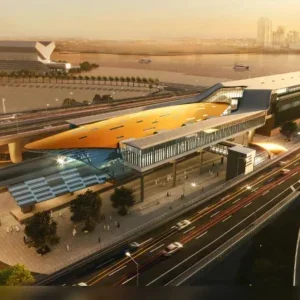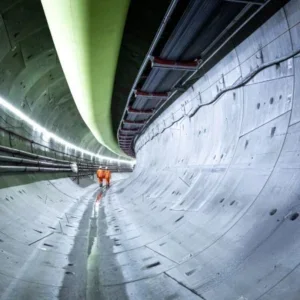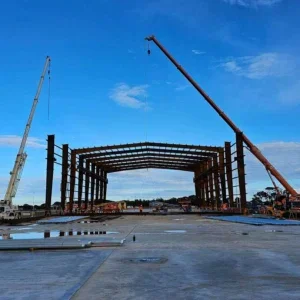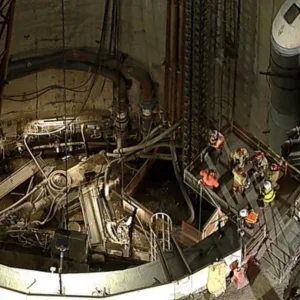The ATM105 roadheader driving the Boggo Road tunnel in Brisbane holed through at the close of last month to complete the longest underground busway in Australia.
Work was underway on the 640m long drive since August 2007. The horseshoe-shaped tunnel has been excavated to a width of 14m and height of 7m (finished clearance is 6m), with a heading of 5.5m high followed by a 1.2m bench. The average mined cross section is 105m2.
Variable geology along the alignment comprises both weathered and stronger tuff, and siltstones and sandstones. Support to the sequential excavation comprises shotcrete, lattice girders and bolts.
Much of the drive was under shallow cover – down to 6m below the sole building the tunnel passed under, which was a heritage structure.
The free surface, however, helped borehole sampling along the axis. The maximum cover was 15.5m, just slightly more than the span of the excavation.
With the geological model available at the pre-approval stage of the scheme, the contractor and consultant – Thiess and Sinclair Knight Merz, which were in the venture together with the Government of Queensland – were able to work in alliance to pick the best excavation and support options. The early close co-operation also enabled more effective job pricing.
The engineering outcomes of the closer co-operation included choosing lattice girders below the heritage building and otherwise employing plain shotcrete for the primary support.
Ground variability at the crown led to resin encapsulated bolts being picked over shell anchored or grouted bolts.
The 1.5km long busway, dominated by the tunnel, is scheduled to be operational by the middle of next year (T&TI, September, p23-26).







